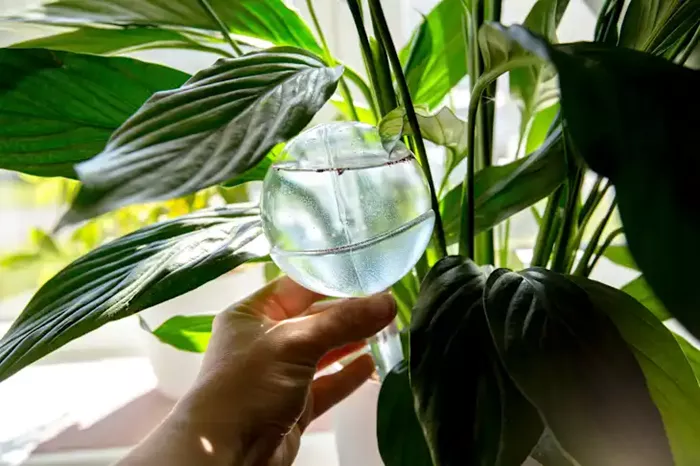When preparing for a trip, I run through my usual packing checklist: toothpaste, shoes, phone charger – the essentials. However, one task I always put off until the last minute is figuring out how to keep my plants alive while I’m away.
There’s no shortage of advice online about how to keep your plants hydrated and healthy in your absence. From DIY tips to gadgets, there are plenty of solutions available. A few years ago, a friend recommended “bottom watering” as an easy, low-prep method to keep my plants watered while I was gone. It seemed simple enough, so I gave it a try. But after that experience, I can confidently say I’ll never use this method again.
What Is Bottom Watering?
Bottom watering involves placing your plant, still in its pot, into a larger container filled with water. This could be anything from a bowl to a bathtub or even a large storage container. The idea is that the plant will absorb water from the bottom up, ensuring it stays hydrated.
According to plant expert Angalena Malavenda, bottom watering can be effective “intermittently,” but it’s not without risks. Overwatering is a common problem, and as Brian Shaunfield, a store manager at Lowe’s, points out, it’s the number one reason houseplants die. If your plant sits in too much water, the roots can’t get enough air, leading to root rot and the spread of bacteria and disease.
My Experience with Bottom Watering
I was leaving for a six-day trip and thought bottom watering would keep my plants sufficiently hydrated. I used a large IKEA container to soak my spider plant, mint plant, parsley, and rubber plant. Confident they were well-watered, I left for my trip.
When I returned, however, I found my plants nearly dead, severely overwatered, and in poor condition.
Malavenda explained that leaving plants in stagnant water for too long can suffocate the roots, leading to root rot and other health issues. Prolonged exposure to overly wet soil can cause plants to droop and the leaves to turn brown prematurely. Additionally, Shaunfield emphasized that not all plants require the same amount of water, so a one-size-fits-all approach like bottom watering is risky.
In hindsight, I’m not sure if I overdid it with the water or missed a crucial step, but I ended up losing all the plants. The excessive water turned the soil into mush, and the plants were beyond saving.
A New Approach to Watering Plants While Away
After replacing my lost plants, I knew I needed a better method for keeping them hydrated during future trips. Luckily, Malavenda and Shaunfield had plenty of advice for how to water plants while traveling without risking overwatering.
One method Malavenda recommends is using a cotton rope wick system, which she describes as highly effective. This system works by cutting pieces of cotton rope long enough to reach from a water source to the plant’s soil. The ropes will act as wicks, slowly drawing water from the container to the plant. If done correctly, your plants will resemble an octopus with water “tentacles” ensuring they stay hydrated.
Shaunfield also suggests using water crystals or a DIY water bottle system. To create the latter, cut off the bottom of a water bottle, poke a hole in the cap, and insert it upside down into the soil, about an inch deep. Fill the bottle with water, and the plant will self-water at a slow and steady pace. Another option is self-watering globes, which release moisture gradually over time and prevent overwatering.
What I Do Now for Extended Trips
Now, when I travel, I’ve adopted a new strategy. For shorter trips, I stick to regular watering until the day I leave and resume watering as soon as I get back. If I’m going to be away for more than a week, I use self-watering glass orbs to ensure my plants stay hydrated.
Although I’m open to experimenting with new watering techniques, bottom watering is one method I’ll never return to. Through trial and error, I’ve learned that keeping my plants healthy requires more than just a simple solution—it requires understanding their individual needs and making sure they get the right amount of water, even when I’m not around.


